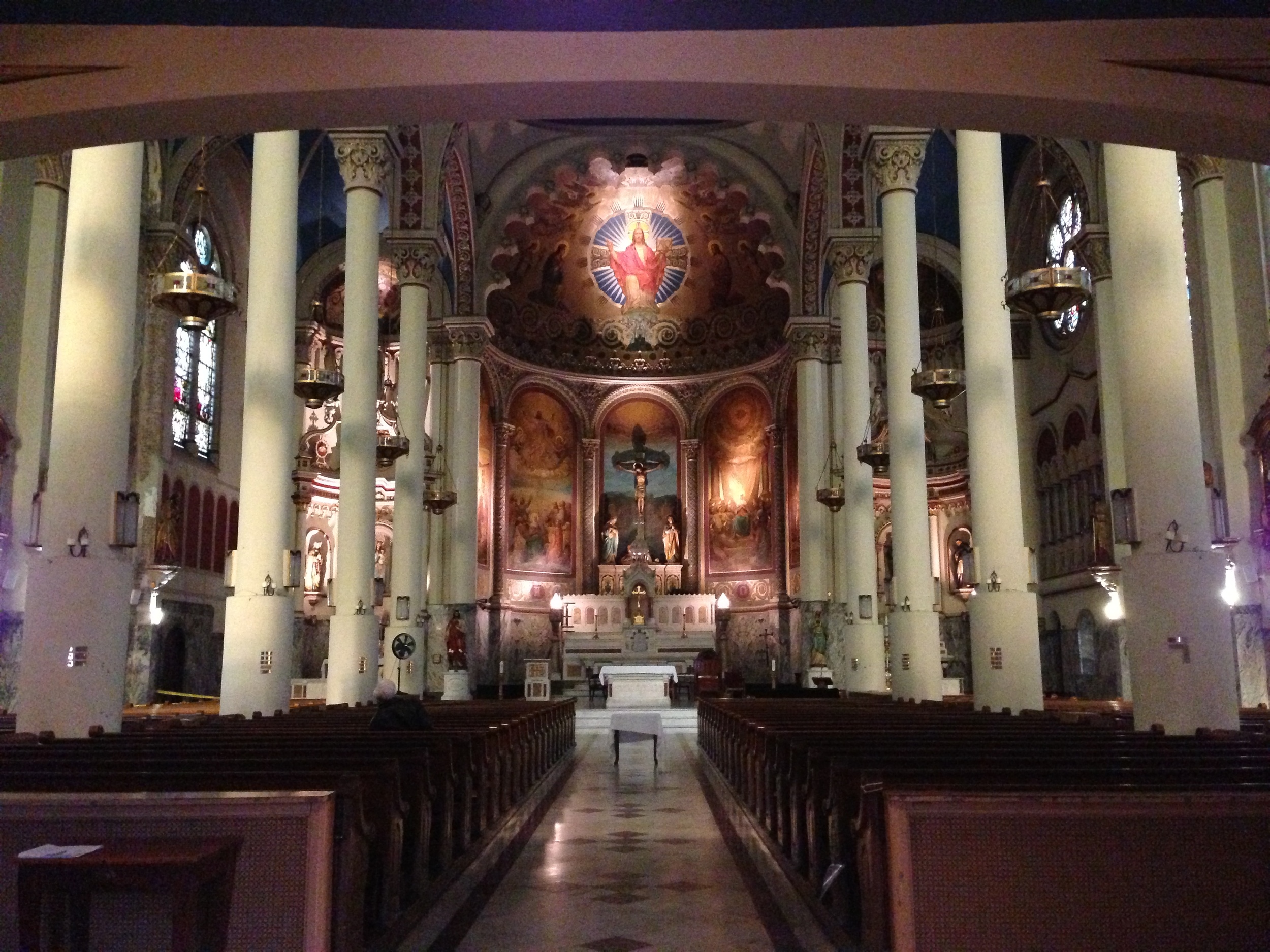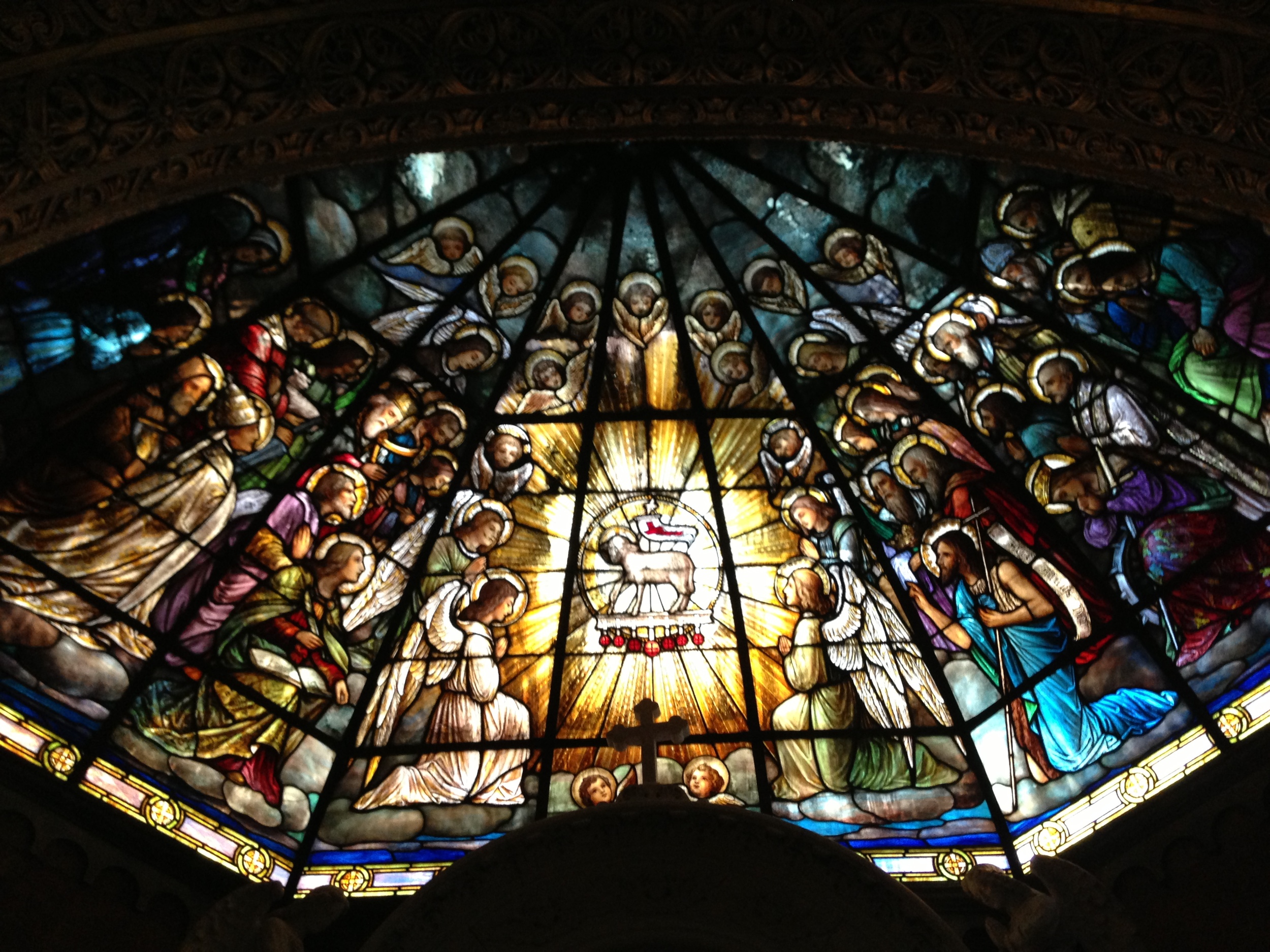The Catacomb Saint of Manhattan: As Seen in Hyperallergic
Originally published on Hyperallergic by Allison Meier.
Click here to see the original article with Allison's beautiful photographs.
Catholic churches in Europe host as many bones as a graveyard, with bits of saints and intact incorrupt bodies encased in glass and displayed on ornate altars. With European populations immigrating to the United States in the 19th century, many of these traditions traveled across the Atlantic. At one church in the East Village of Manhattan — Church of the Most Holy Redeemer, on East 3rd Street between Avenues A and B — there is a little-known shrine where over 150 saint relics are contained, as well as a life-size wax body holding the first complete saint skeleton to be sent to an American church.
“Relics are a unique way that the Catholic Church relates to the dead,” Elizabeth Harper of All the Saints You Should Know said on a relics tour in late October for Atlas Obscura at the Church of the Most Holy Redeemer, ahead of that weekend’s All Saints’ Day. Through All the Saints You Should Know, an online site chronicling her research into folk saints and popular Catholicism, Harper has explored everything from incorrupt saints, to skeletal Baroque tombs in Rome, to taxidermy crocodiles in Spanish churches. She’s currently researching purgatory dioramas of Naples for Virginia Commonwealth University’s World Religions and Spirituality Project. A vivid diorama of souls walking purgatory’s sea of flames is on view in the Church of the Most Holy Redeemer, and asks: “Have pity on me … At least you, my friends,” and below lists, “Redemptorists buried in crypt of this church.” Per Catholic belief, only martyrs go directly to heaven, the rest must pay penance for their sins.
While not actively religious herself, Harper is interested in the history, meaning, and visual culture behind why these relics, that some people see as macabre, exist. “There are still people who are shocked by this today, that living and dead should be separate,” she said.
Like Harper, I also grew up Catholic, and although most of the rites and rituals didn’t interest me, I remember being fascinated by the minuscule chip of bone said to be from John the Baptist lodged in the altar of our Oklahoma church. That a relic could travel that far in both time and distance, and have this tangible connection to the sacred, was meaningful to me in a way that the scriptures and hymns were not. As Harper explained on her tour, that visible connection is as important as the veneration itself. (There’s a misconception these relics are worshiped, but in the Catholic Church only God receives prayers. Saints are more like petitioners.)
“The relic is the saint both spiritually and physically,” Harper said. The East Village church and its reliquary are surprising for Manhattan. Walk through the wooden doors of the limestone church with its looming bell tower, and it’s like stepping into another world from the surrounding tenement architecture. A mix of Baroque and Romanesque influence mingles on soaring arches, stained glass, and painted ceilings in the nave. The church was consecrated in 1852, founded by the Redemptorist Fathers, and was the central place of worship for the immigrant Catholic community of Kleindeutschland, or “Little Germany.” Now, most traces of this German society are gone except in the surviving 19th-century architecture.
To the right of the altar, a chapel holds the reliquary shrine, which is elaborately carved white marble, where angels fly and kneel around glass spaces holding the relics. A list alongside tallies over 150 items, including obscure martyrs and famous figures like St. Mary Magdalene and St. Paul the Apostle. There are bits from the “tomb of the Blessed Virgin,” “Home of St. Joseph,” and the “Manger of Our Lord.” There is a recognizable small bone; most items are hard to discern behind the glass with their handwritten labels, but the ostentatious, gleaming gold containers radiate their importance. Small ex votos — offerings left by people whose venerations were answered — hang in the shrine by the relics. Whether or not these bones were once part of their named saint isn’t necessarily important to the church; it evokes the saint’s memory through the visual presence of the object.
Beneath the shrine’s altar is a wax effigy of a martyr known as St. Datian, which arrived at the church in 1892. Curiously, he later got connected to an 1897 robbery where a police officer was shot chasing a man who stole from the prayer box, and up until the 1940s there are mentions of the saint being the police officer’s incorrupt corpse. In actuality, St. Datian, whose life is vague, was likely one of the Roman catacomb skeletons brought out and distributed as relics to replace those destroyed in the Reformation. Some were lovingly draped in jewels, others were encased in wax like St. Datian, whose bones are inside a box, hidden in his prone body. Harper explained that he was gifted by an Italian woman when the catacomb saints were falling out of favor in Europe, as their origins were somewhat dubious.
Around 40 Roman Catholic churches recently closed around the state of New York, and even places like the Church of the Most Holy Redeemer can be obscure to people who walk by everyday, perhaps not considering opening the doors to the sacred space. New York City has several such places, such as the bloodied sock of Padre Pio at the Church of St. John the Baptist, Our Lady of Mt. Carmel with its wax saint in East Harlem, and Mother Cabrini resting in a glass coffin in Upper Manhattan. These shrines are as much a part of our collective visual culture, and how we express our beliefs with objects, as an exclusively religious practice. There’s a value in bringing them visibility, and considering how they transcend time and language.


